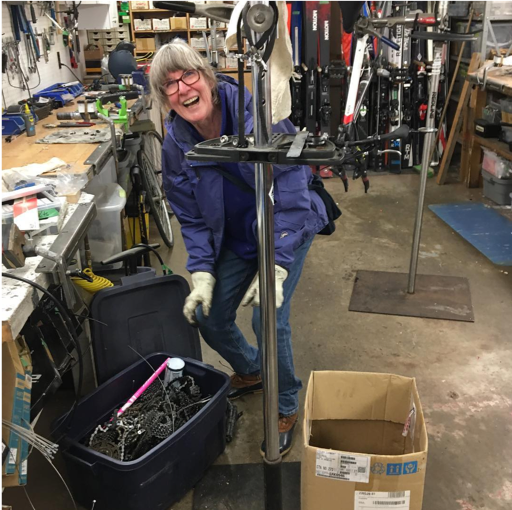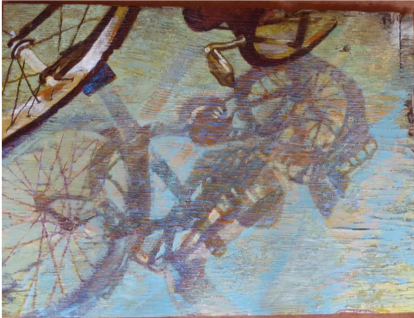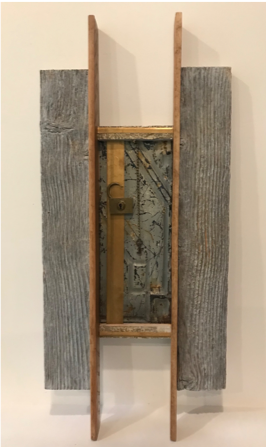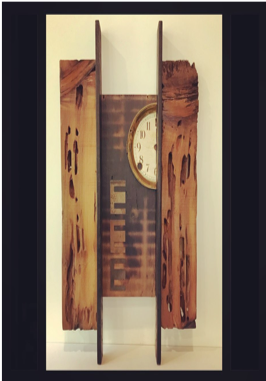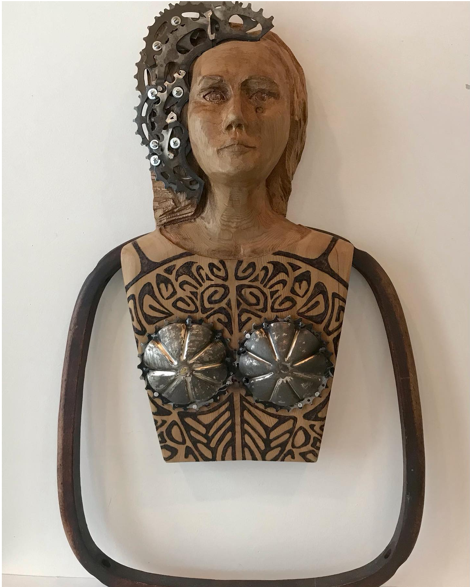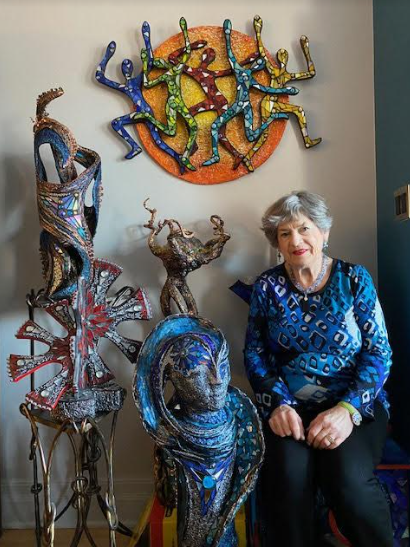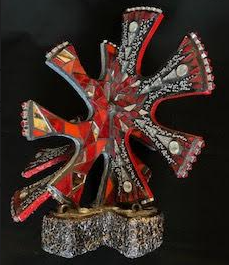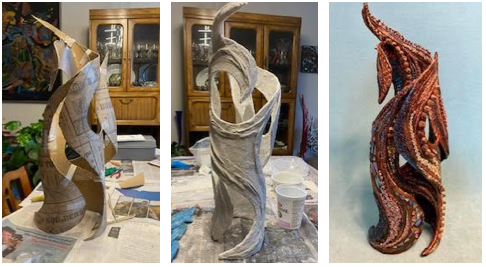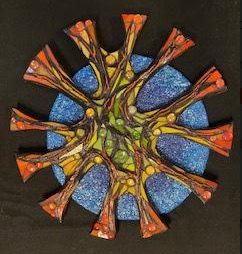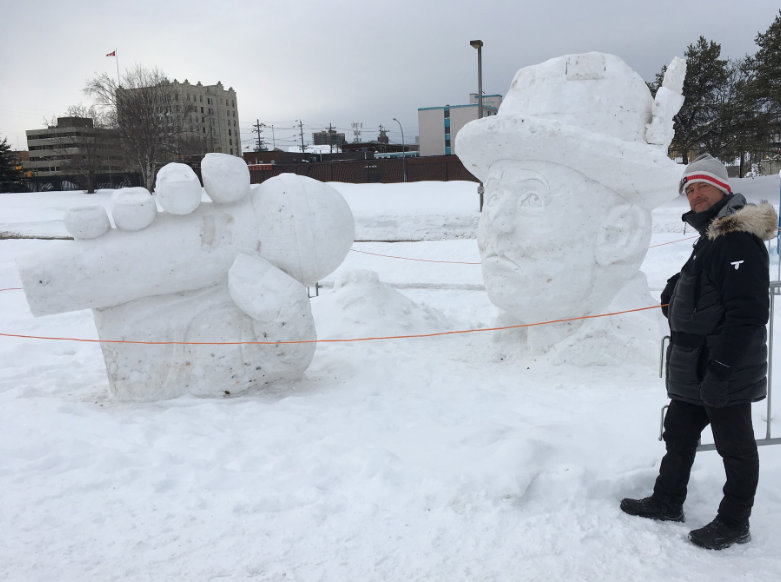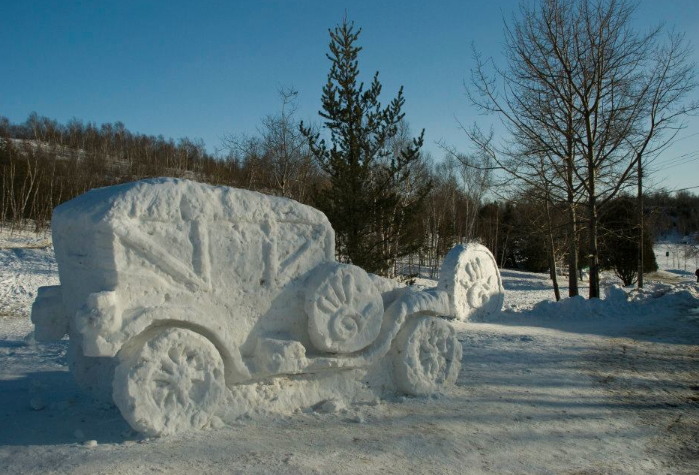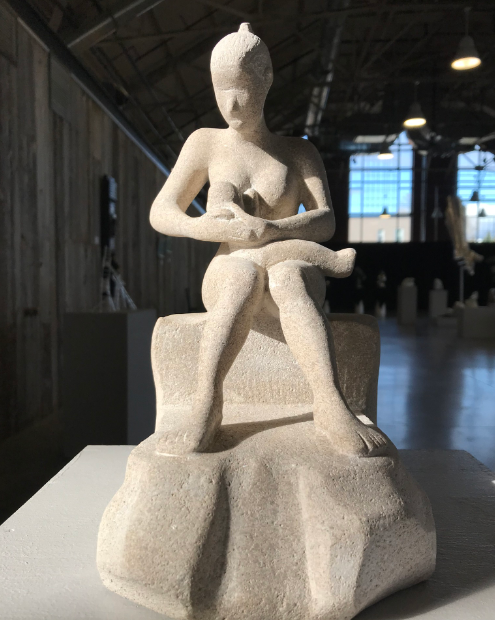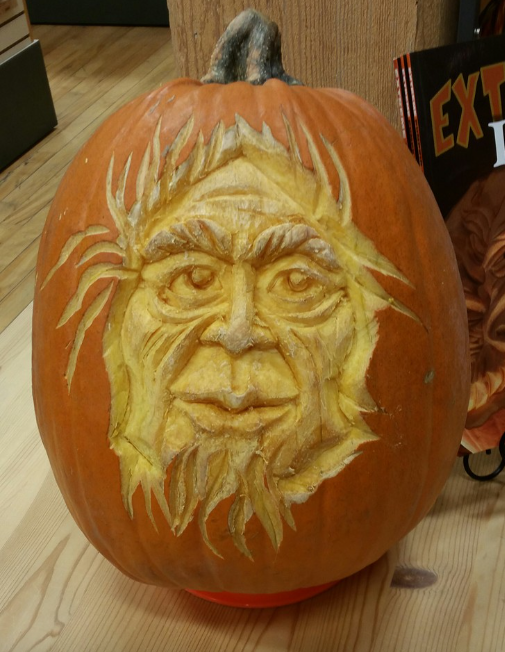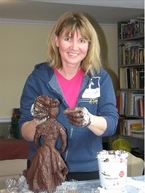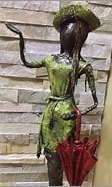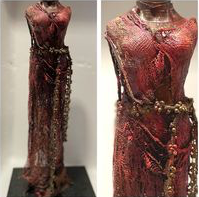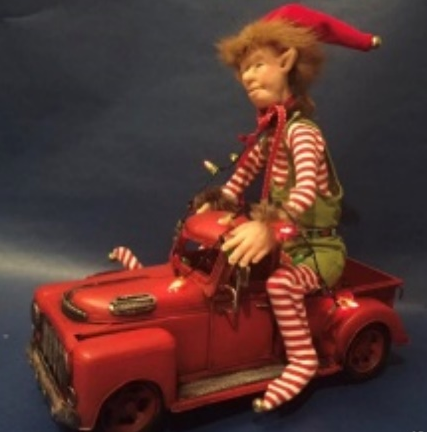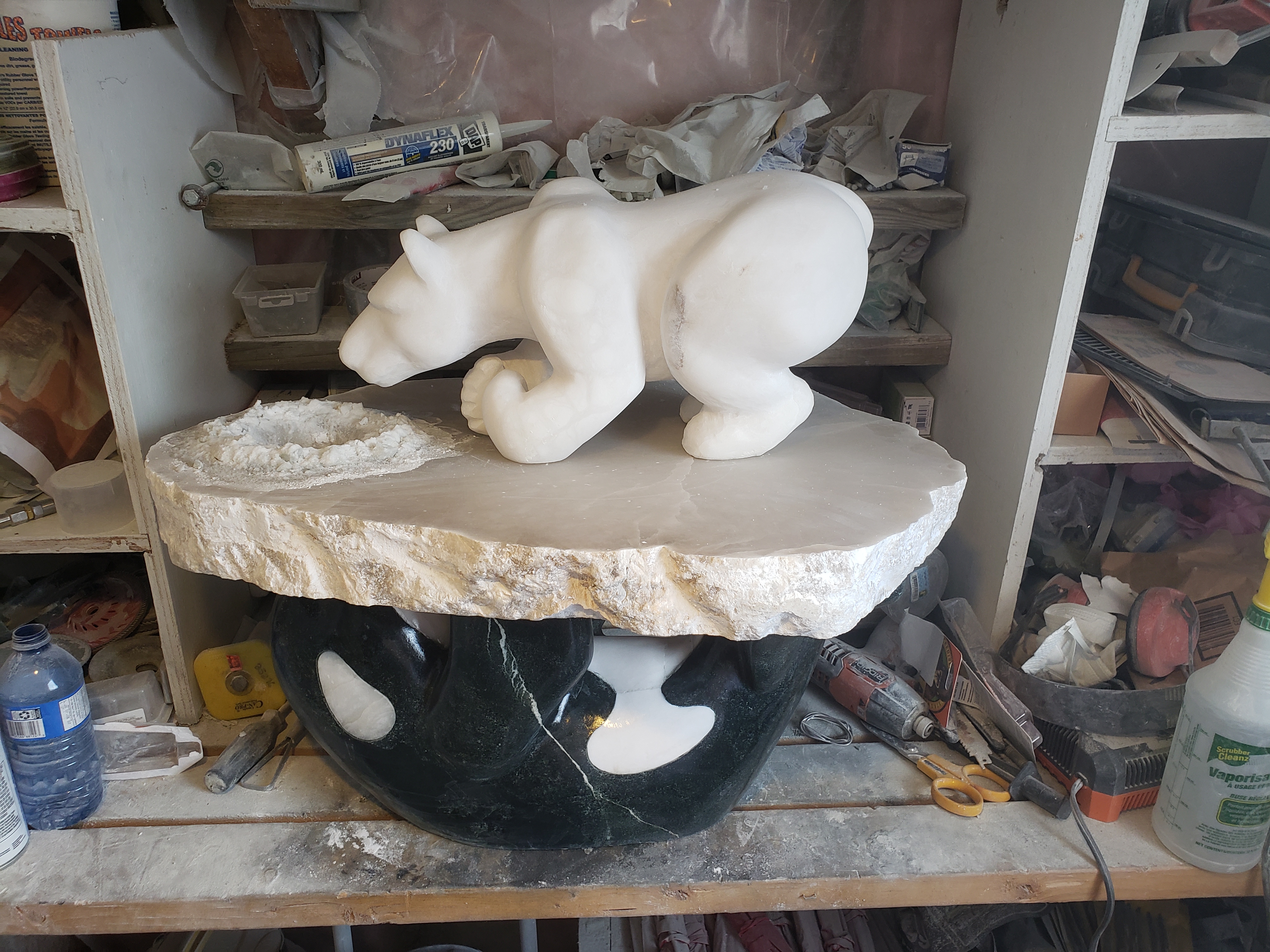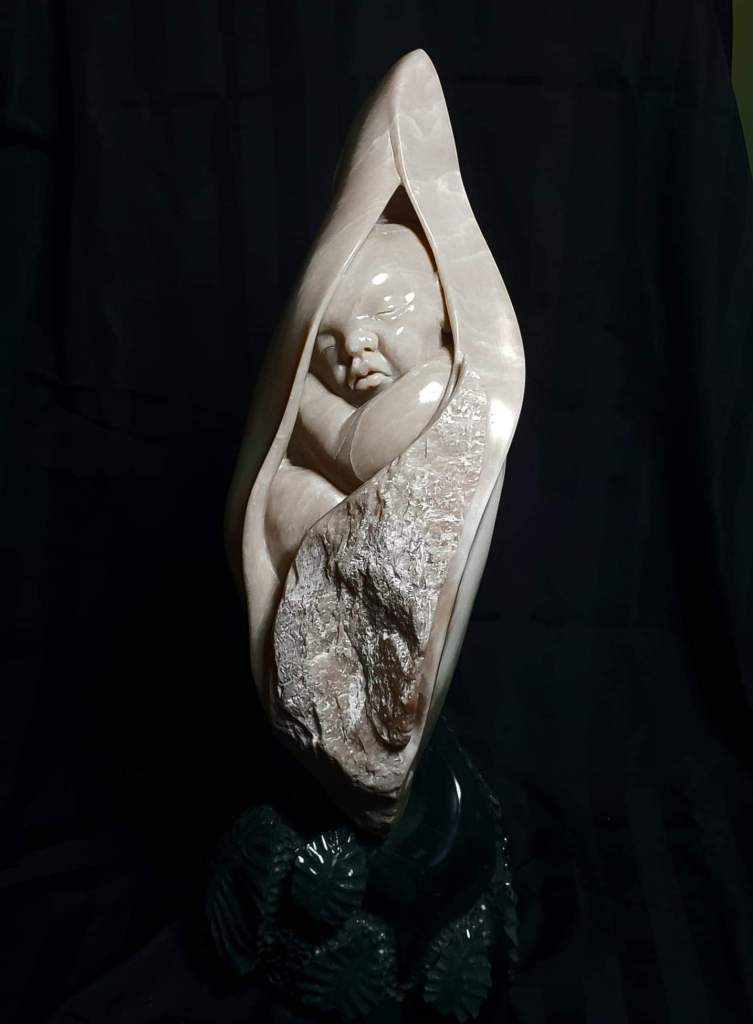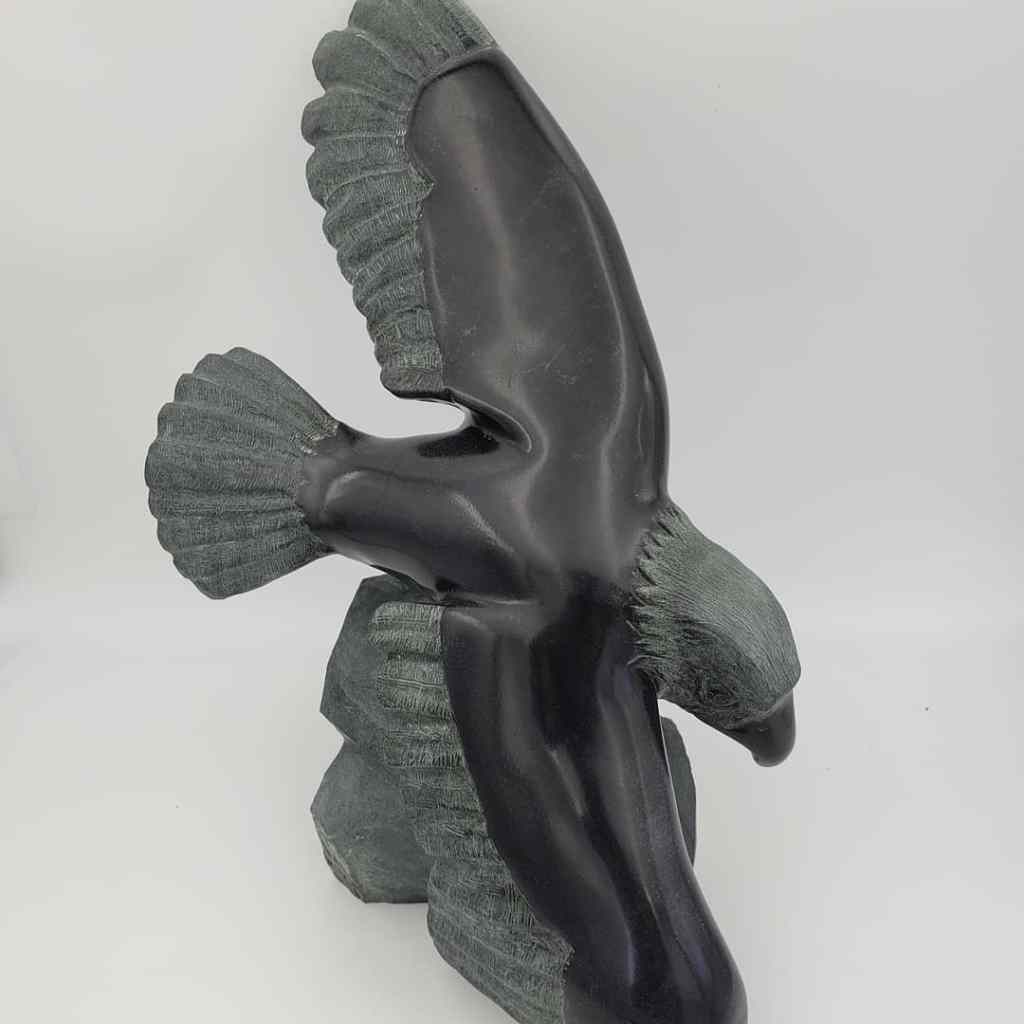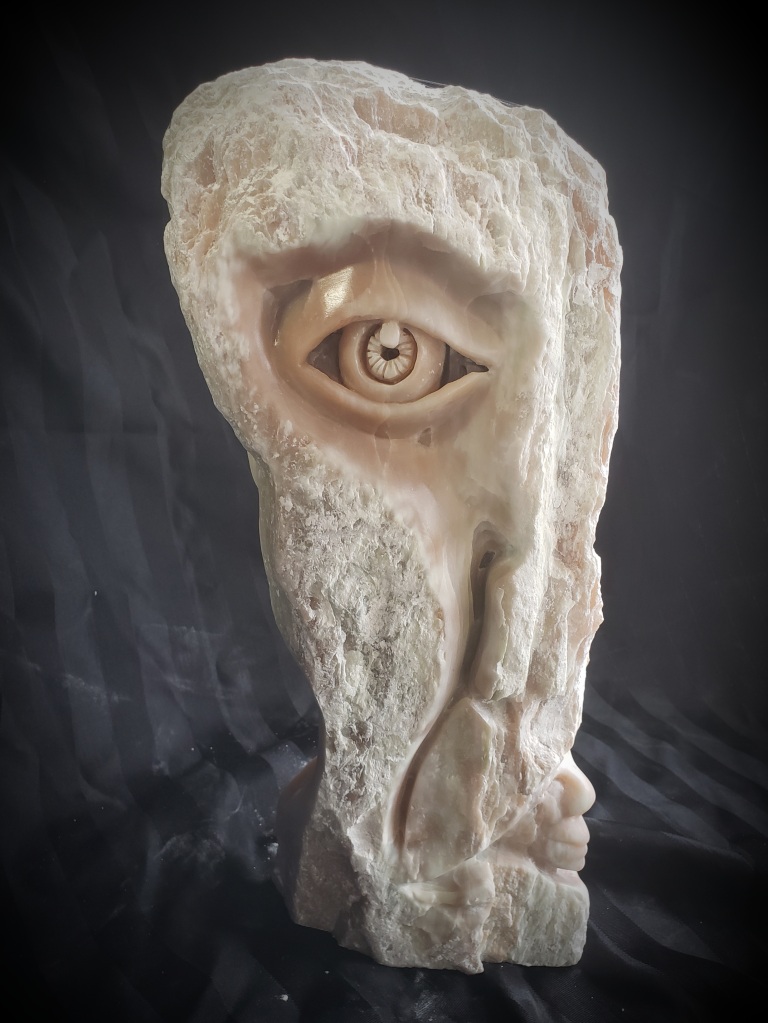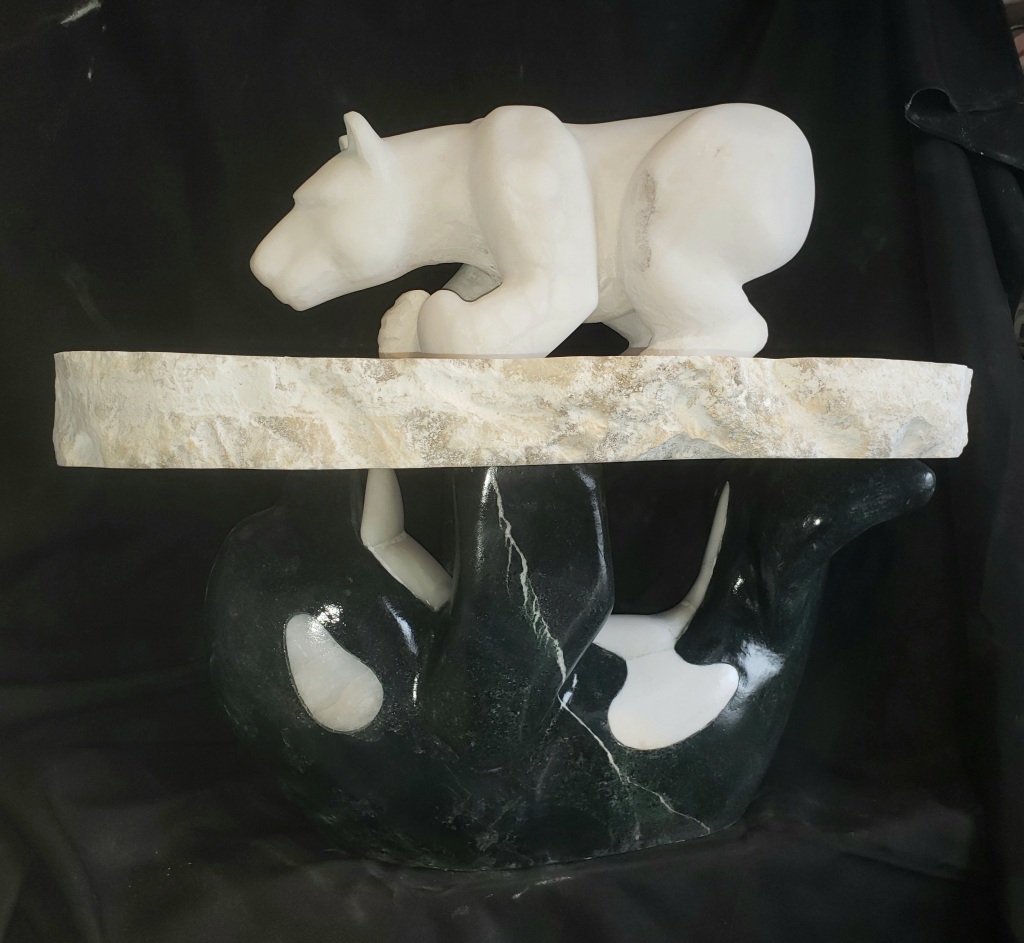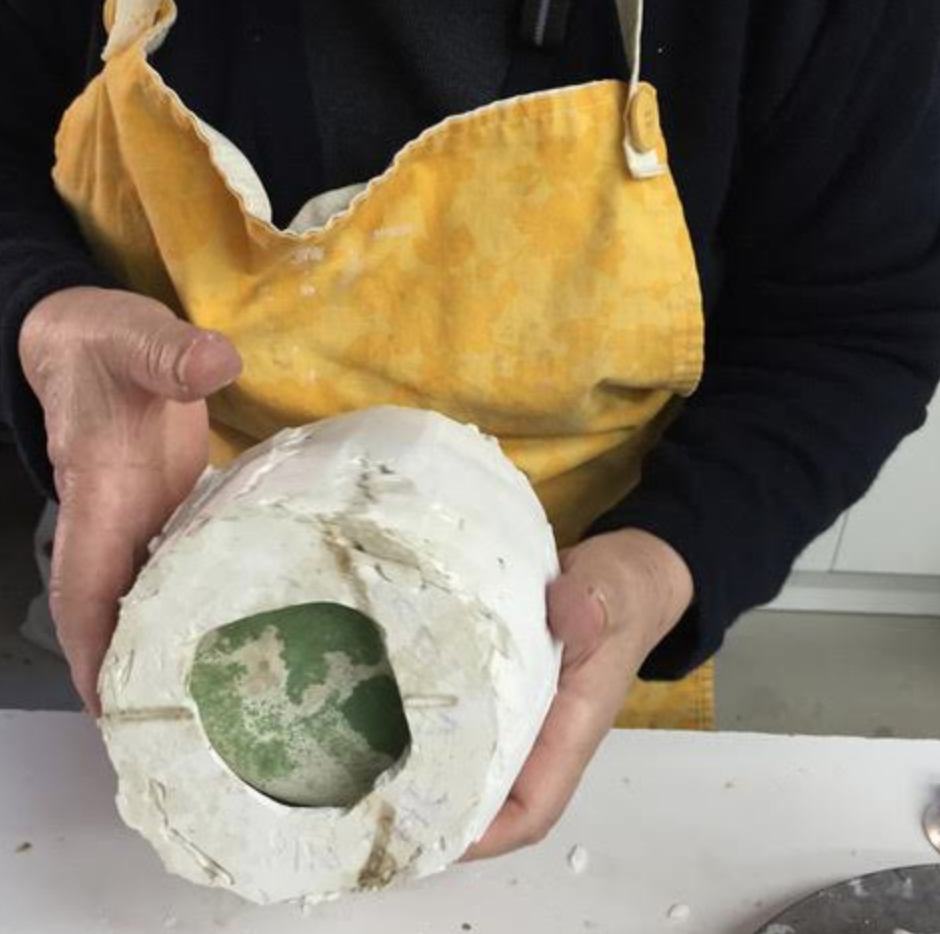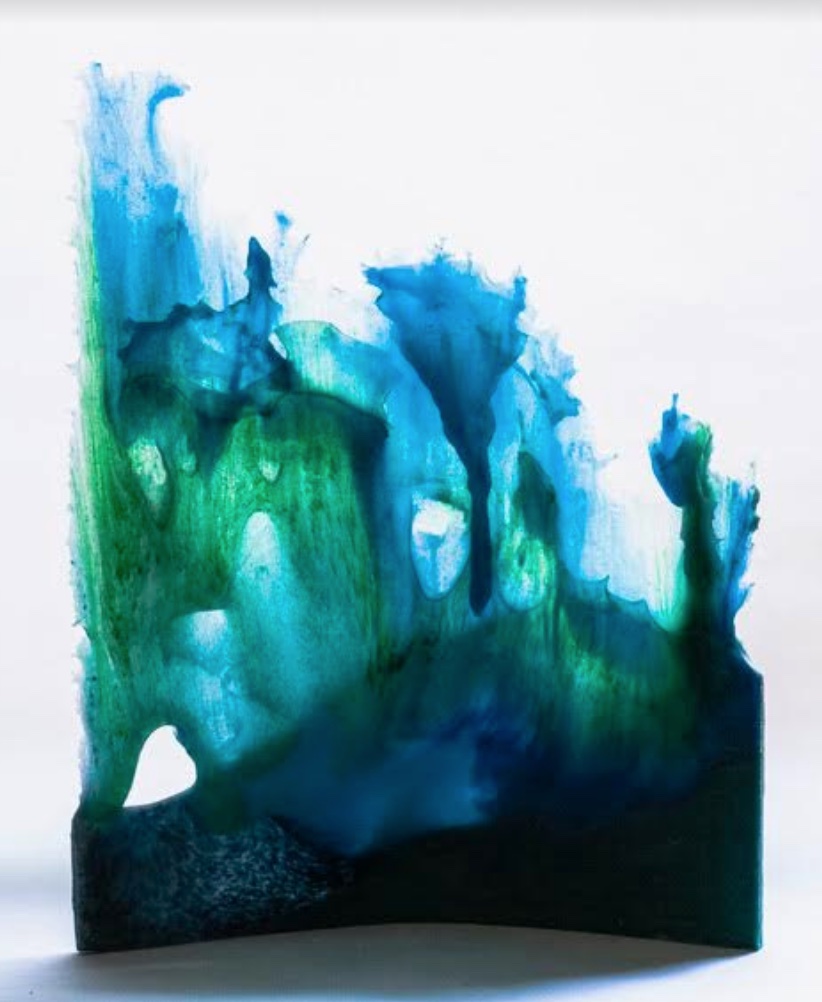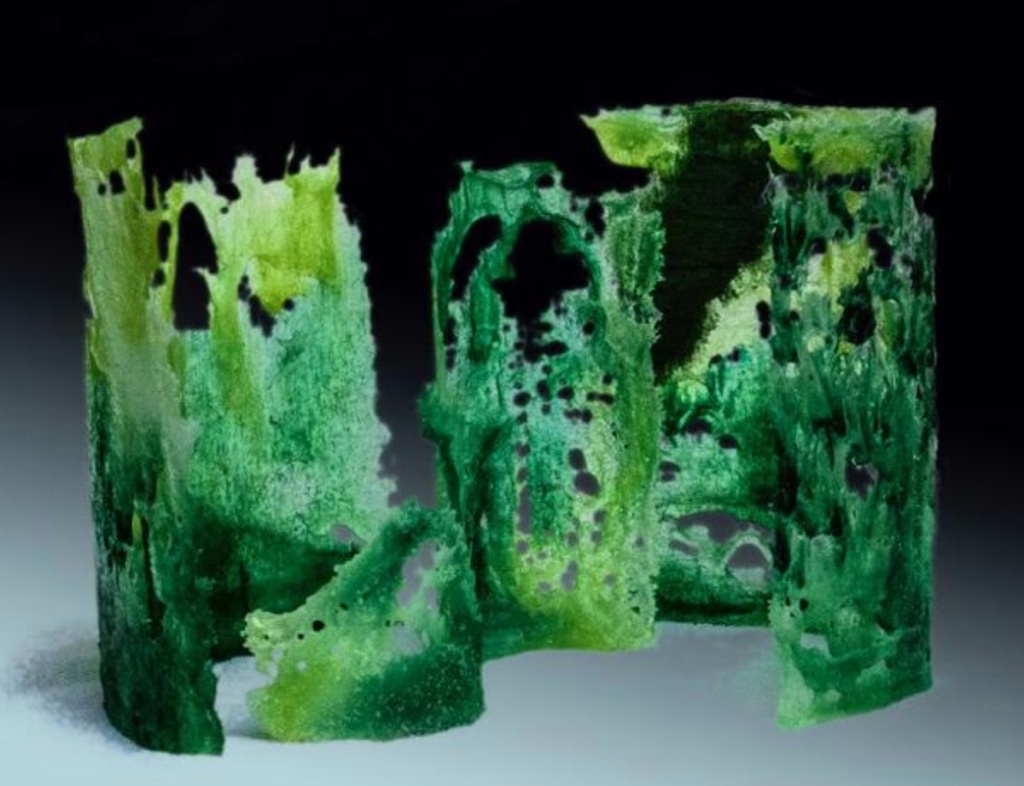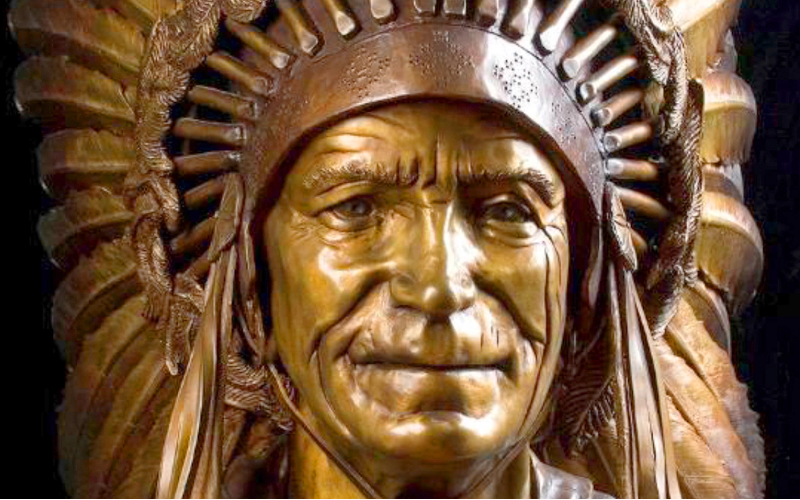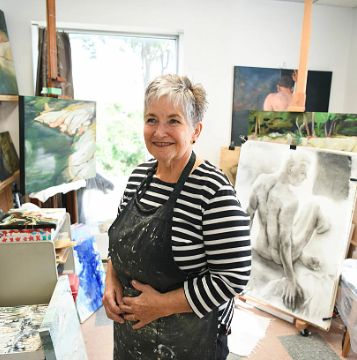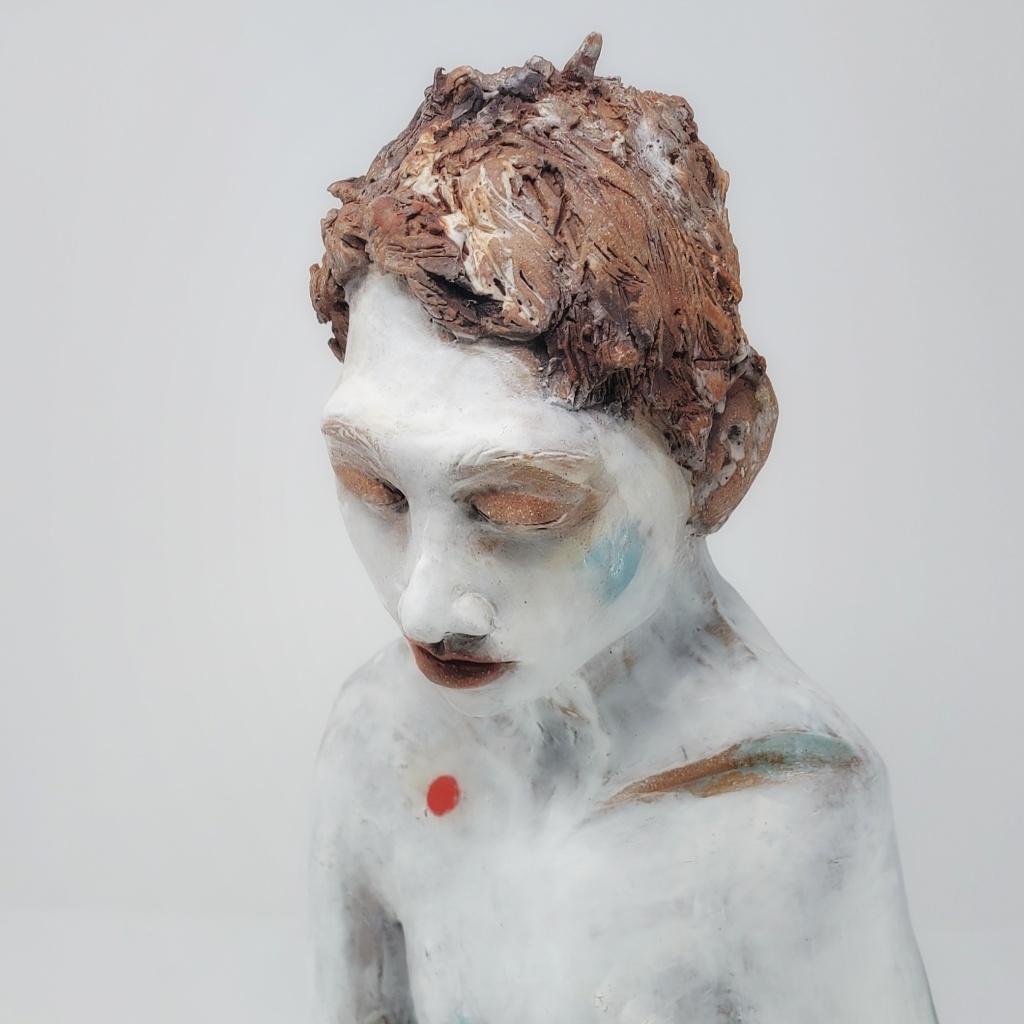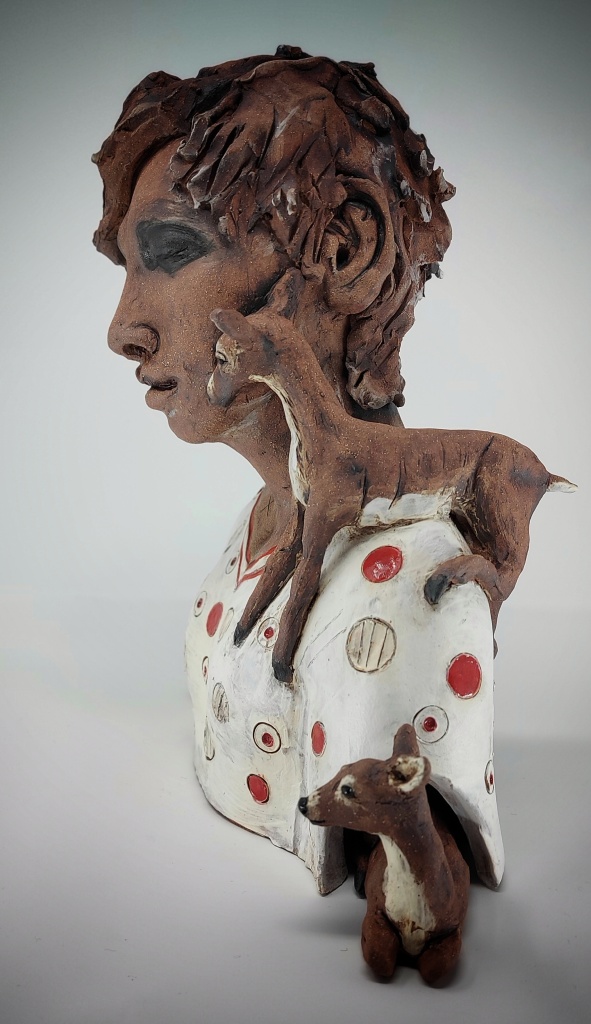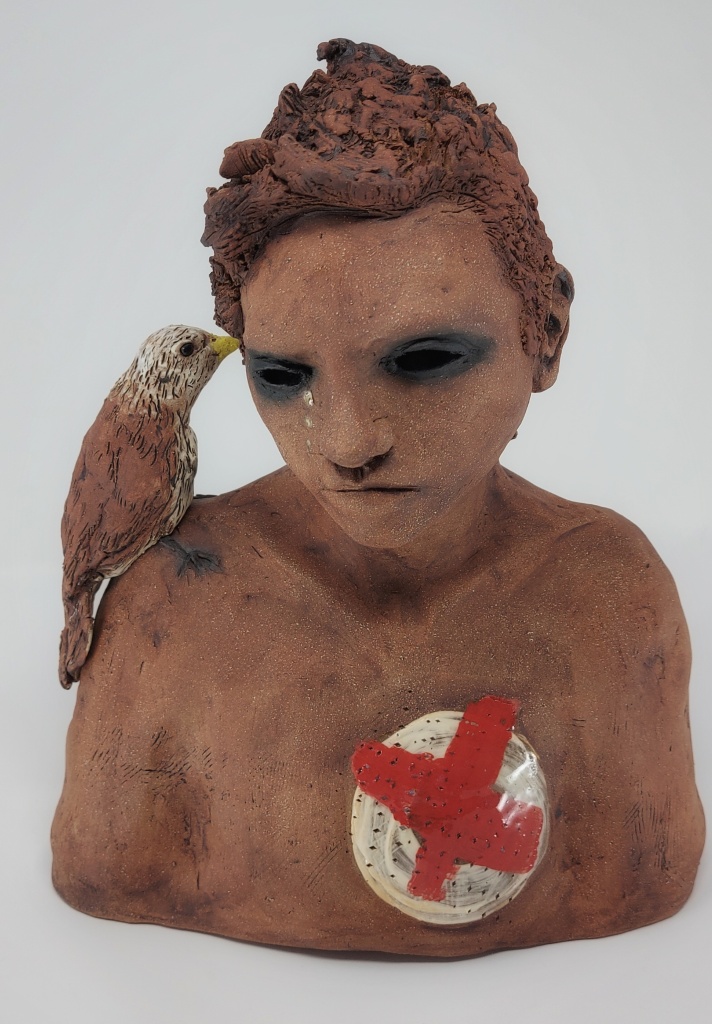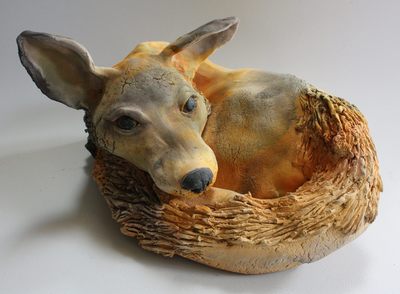Wood Carver Defying Her Limits
by Sandra Marshall

Olga Kay-Grigoriev had a varied early work career, first in non-profit, education sectors and motherhood. During those years art has always been close to her heart as she painted when she had free time. Olga now devotes her energies to painting and sculpture and especially to carving. In 2020, she answered her artistic calling after she retired as superintendent of education for the Ottawa Carleton District School Board.
Olga enjoys working in oil and acrylic, as well as print-making. At the Ottawa School of Art she recently added figure drawing to her skillset. However, the challenges of three-dimensional art have captured her spirit. She has built sculptures in papier maché, clay and metal, but she is most enthused while carving wood!
Olga Kay-Grigoriev’s passion for sculpture began in 2020 as she adapted to her new rural environment north of Ottawa in Val-des-Monts, Quebec. Trees surrounded her. They were her solace and her company.
Trees offered plentiful wood to carve, however, as she had never carved before, she sought advice to get started. Happily, a long-time artist friend and Toronto-based instructor offered his support. Step-by-step, he helped Olga make her first wood carving, a fantastical woodland dragon.


Another of her first figurative pieces, “She Hears Crow Songs”, is a favourite. “It was a difficult time for me then and I immersed myself in my work to have a concrete focus.” The sculpture was a “stretch goal” which she was uncertain she could attain, as it seemed beyond her skill level and she was carving on her own during Covid isolation.
“I took my time with every part of the sculpture, learning first about general body proportions, then how to carve specific details like the nose, mouth and eyes. I feel the piece is a good beginning effort and it conveys emotion and tells a story. The crow is a recurring theme in my work .”
Kay-Grigoriev was empowered by her new skills and continued to sculpt figurative pieces, telling her life stories of joy, love, loss, and sorrow through them. These emotions animate her sculptures of nature, animals and people. Abstract figurative sculptures populate the garden of her mind. “Sometimes thoughts and feelings just need to be worked out with a mallet and gouge.” A favourite shape could engage her imagination. And she might create a horse, a leaf or an ear.

The horse head sculpture is another that she is proud of. She chose to work from a live horse model in order to understand its proportions. She advertised locally for willing horse owners and received invitations to come and take measurements. The horse named ”Mjumaj “, was a good sport and was very tolerant of her ruler and calipers. This piece required reducing the horse’s proportions to a smaller piece of leftover timber.
Olga especially enjoys carving, perhaps because of its risk. “You must be completely focused on what you’re doing in order to avoid injury or lose a piece of your work.” Wood carving is a significant challenge: “Each time I create something new, I push myself to take it a step further. I love the combination of different materials so I have been incorporating castings in gypsum cement into the wood carving , trying to create a smooth transition between the two.” Her favoured wood species are pine and cedar and likes basswood for its consistent grain.
One of her preferred tools is the Lancelot, a round chainsaw which she uses to rough out the form and to add texture to pieces. She also uses it to add detail and movement to her birds. ”It’s somewhat dangerous to use because of the kick back, but it is effective.”
Kay-Grigoriev had the good fortune in 2022 to study sculpture in Florence, Italy. Over the period of a month, she took courses at the Leonardo da Vinci school and toured galleries in the heart of the Renaissance capital, marveling at the huge blocks of marble carved by the masters – without the modern tools and conveniences available to us now. She delights in that exposure: “Their work was exquisite, precise and hugely inspiring. While I generally like to work quickly and loosely, the time spent in Florence made me appreciate the value of slowing down and getting it right. I worked with clay during this time and learned to make molds , which I now use to add different elements to my wood designs. I love the juxtaposition and transition to different media within one piece. Wood next to cement or metal is particularly appealing to me.”
Olga begins her process with an idea which she draws or models as a maquette. Then, she searches for wood with suitable characteristics. Each piece, whether salvaged or harvested from the forest, has its own unique qualities which need to be considered for the project at hand. Size, grain, shape and hardness are all taken into account. The bark is stripped and the preliminary drawing is transferred to the piece.


The first tools to be used are from the chainsaw family. These cut away large portions of waste material. After some time spent at this stage, a roughed out form starts to emerge. Then Olga moves to a smaller sized round chainsaw. When creating many abstract figurative pieces, she employs a shaping disc with a regular angle grinder.
She also likes to use a die grinder with a variety of different burrs. This tool gets into the smaller spaces and allows for more detailed work. Hand carving with a mallet and gouge often comes next, depending on the grain and the look she is trying to achieve. The more detailed the piece, the smaller the size of gouge used.
Finally she is ready to sand and oil the pieces. For outdoor pieces, she has been experimenting with “shou sugi ban”, the Japanese method of wood preservation, which chars the wood with a propane torch.
If you would like to attempt wood carving, Kay-Grigoriev recommends starting with media that are easy to use like soap or Styrofoam before progressing to wood. This will help you understand the technique of removing material instead of building it up. Drawing practice will also help to visualize your work from different angles.
Most important, acquire some excellent safety practices from someone who is trained in operating the tools you’ll be using. Many of them are dangerous and that is not something you want to take lightly!

The favourite part of the sculpture process for Olga is when an idea for a new piece appears to her. It’s a creative light bulb. Everything is bright! Her least favourite part is the sanding. It’s tedious and painstaking, with sawdust flying everywhere. She is not fond of wearing the respirator mask either, but it’s essential during this stage. This is the life of an artist carver!
Kay-Grigoriev plans to complete some larger outdoor installations and she aspires to create art for public spaces. Next year, she will collaborate on a project with another artist. A show is in the works for 2025 which will combine paintings on canvas with complimentary wooden sculptures.
Olga is always open to new opportunities and welcomes commissions. Her plan is to keep honing her skills, along with her tools, and learning from carving masters wherever they are found.
You are invited to see her work currently at the Kanata Civic Art Gallery, the Galerie Old Chelsea and at her studio in Val-Des-Monts, Quebec, by appointment.
On Instagram, please visit : @mes_sculptures_en_bois

